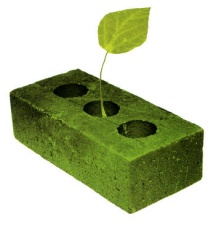Primer I: Up-to-Speed on LEED®? (If you’re sure, you can skip to the next post)

Your Vestry has decided that the proposed new Education/Formation Building is to be designed and constructed by the most sustainable means possible in support of our Christian pledge to Environmental Stewardship. LEED®, standing for Leadership in Energy and Environmental Design, was coined by the U.S. Green Building Council to denote a voluntary 3rd-party rating of both new construction and existing building operating methodology. For participants, LEED New Construction/Major Renovation 2009 is all-around a more stringent building code than a local jurisdiction’s, particularly in demanding highly efficient energy and environmentally responsible—“sustainable”—components. But, in recent years local building codes have been revised to incorporate LEED standards, including Anne Arundel Co. Benefits from adoption of LEED are realized both upfront and in “downstream” operations/maintenance. The building categories of LEED are: 1) Sustainable Sites; 2) Water Efficiency; 3) Energy and Atmosphere; 4) Materials and Resources; 5) Indoor Environmental Quality; and two others: Innovation and Design and Regional Priorities. OBTW, did I say that LEED promotes healthier buildings to meet and work in? Blogs following this one in the coming months will tell you how we’re gonna make it happen. Please feel free to comment about the blogs, to include sharing how you’re bringing a more sustainable living environment and life style into your homes and places of business.
BTW, as of July 2012 there were 2 billion square feet of LEED-certified building stock worldwide. By year-end, Maryland ranked 6th across the U.S. in LEED certified buildings with 1.9 square feet per capita in 127 projects containing 11 million square feet. (Per capita, DC, VA and MA were much higher even.) OTOH, the numbers of LEED-certified buildings belonging to faith-based organizations probably aren’t more than a few handfuls. So, we can take leadership in this measurable vanguard of 21st-century Christianity. St. Margaret’s Stewardship expression through a sustainable new building can come to par with St. Matthew’s meaning: “Are not two sparrows sold for a penny? Yet not one of them will fall to the ground apart from your Father.” (10:29)